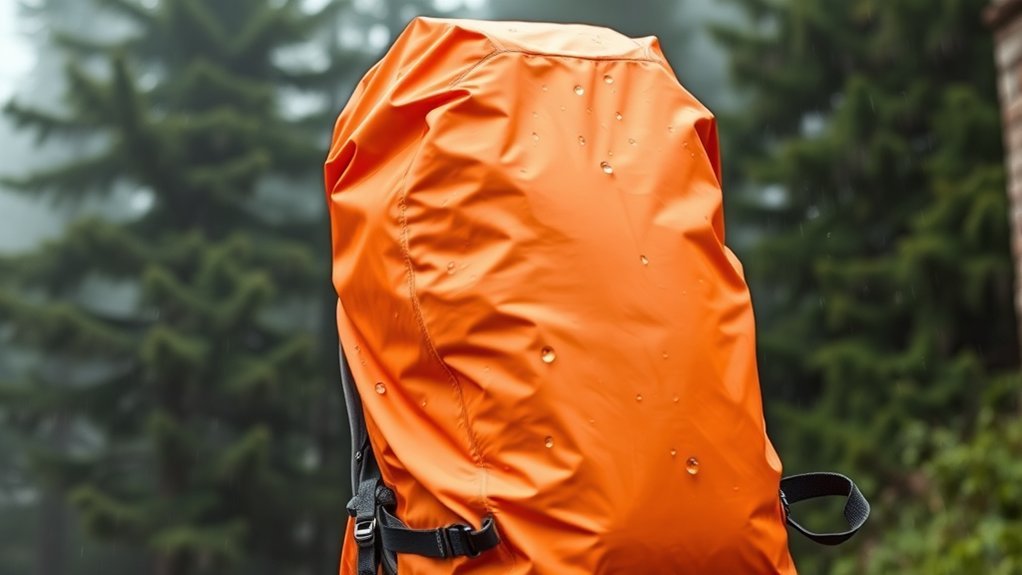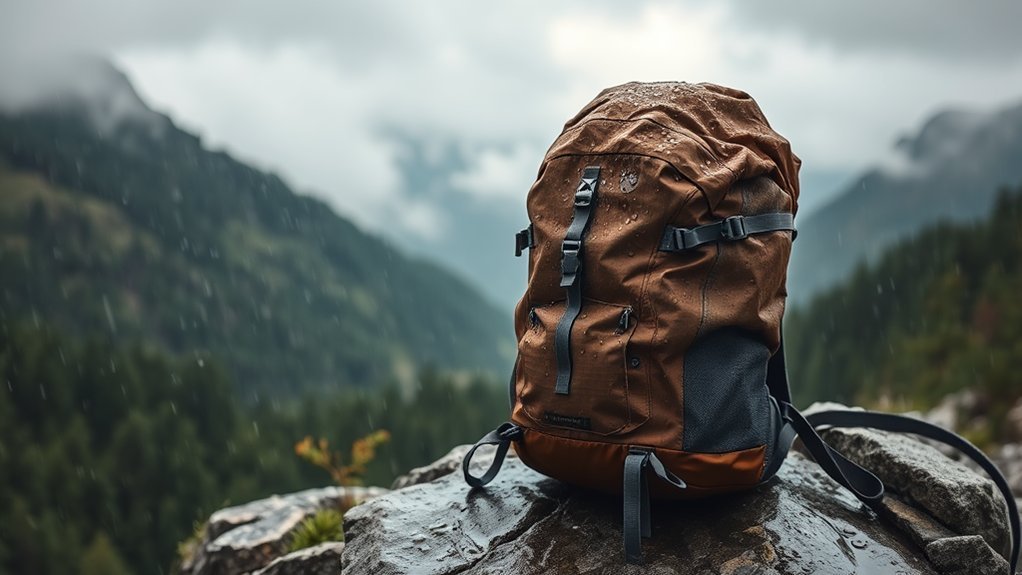You know that sinking feeling when droplets start hitting your pack on the trail? I've been there countless times, watching the sky darken while my precious gear sits vulnerable in a regular backpack. After 15 years of hiking through everything from mountain drizzles to tropical downpours, I've learned that water resistance isn't just nice to have – it's crucial for any serious outdoor adventure. Most standard backpacks can handle a light shower, but when you're miles from shelter with your camera, spare clothes, and trail mix at stake, you need serious waterproofing. Trust me, nothing ruins a great hike faster than discovering your gear swimming in rainwater. Let's dive into some rock-solid ways to keep your pack dry, whether you're tackling a weekend trek or just dodging puddles on your daily commute.
Why Waterproofing Your Backpack Matters
Whether you're hiking through misty mountains or commuting on a rainy day, keeping your belongings dry is imperative for any backpack owner. We all know how frustrating it's to reach into our backpack and find our gear soaked from unexpected Rain or water exposure. That's why proper waterproof protection isn't just a luxury – it's essential.
Without adequate protection, water can seep through your backpack's fabric and damage electronics, important documents, or extra clothes. Even light drizzles can compromise your belongings dry over time. We need to ponder various weather conditions that might affect our adventures, from morning dew to sudden downpours. By taking steps to keep our gear dry, we're not just protecting our valuables – we're ensuring peace of mind wherever our journeys take us.
Essential Waterproofing Materials and Tools
A well-stocked arsenal of waterproofing tools can make the difference between dry gear and soggy disappointment. We'll show you the essential materials you'll need to create a truly waterproof backpack that stands up to nature's challenges.
Let's start with waterproof spray, like Nikwax, which provides a water-resistant coating that's easy to apply. For vulnerable spots, we recommend a seam sealer to create a water-tight barrier along the stitching. Don't forget about backpack liners – they're your first line of defense against moisture. We also love using dry bags to keep specific items extra protected inside your pack. Finally, a lightweight rain cover is perfect for those unexpected downpours. With these waterproofing materials at your disposal, you'll be ready to tackle any adventure with confidence.
Waterproofing Sprays and Sealants Method

Now that we've gathered our waterproofing materials, let's put the most versatile tools to work – waterproofing sprays and sealants. We'll start by thoroughly cleaning our backpack to guarantee the waterproofing treatments stick properly.
Next, we'll apply 1-2 even coats of a quality waterproofing spray like Nikwax or Grangers. This creates a water-repellent coating that transforms your regular pack into a water-resistant backpack.
For extra protection, we'll use seam sealers around zippers and stitching to create a complete waterproof barrier.
Using Pack Liners and Dry Bags Effectively
Pack liners and dry bags provide an excellent second line of defense against moisture, working alongside your waterproofing treatments. We recommend using waterproof dry bags inside your backpack's main compartment to keep your gear dry during heavy rain or accidental submersion. These specialized bags create a completely waterproof barrier between your items and any moisture that might seep through.
For maximum protection, we'll want to organize our gear into separate dry bags based on how much protection each item needs. Electronics and important documents should go in fully waterproof containers, while clothes can use basic pack liners. By layering these protective elements, we're creating multiple barriers that work together to keep the backpack and its contents protected from rain. This thorough approach gives us the highest level of protection in challenging conditions.
Rain Cover Selection and Application

While internal protection keeps our gear safe, selecting the right rain cover adds critical external defense for your backpack. We'll want to choose a cover that fits snugly over our pack, preventing any gaps where water might seep in. Look for rain covers with elastic edges and adjustable straps – they'll stay secure even in heavy rain and wind.
When unexpected rain hits, we can quickly slip these protective shells over our packs for great protection. The best covers add an extra layer of protection without adding much weight or bulk. Remember that a cover that's too large allows water to pool, while one that's too small won't cover everything. Keep your backpack dry by storing the rain cover in an easily accessible pocket so you can deploy it fast when storms approach.
Maintaining Your Waterproofed Backpack
Looking after your waterproofed backpack doesn't have to be complicated, but it's key to keeping it performing at its best. When we invest time in proper maintenance, our backpacks stay ready for any adventure, protecting our sleeping bag and other gear from unexpected rain.
Clean your bag regularly by hand washing with gentle soap and let it dry completely before using. Refresh the waterproofing every 6-12 months with a quality waterproofing spray. Check all seams and surfaces for wear and tear, fixing small issues before they become big problems. Store your backpack in a well-ventilated spot to prevent moisture buildup.
We've found that these simple steps make a huge difference in how long our waterproof backpacks last. With consistent care, we'll keep our gear dry through countless adventures ahead.
Advanced Tips for Extreme Weather Protection

For serious outdoor adventures in challenging conditions, standard waterproofing mightn't be enough. We've put together a guide for the best ways to waterproof your gear when you're going on a long journey in extreme weather. One of our great options is using a roll-top backpack, which prevents water from seeping in better than traditional zippers.
For the ultimate protection, we recommend combining waterproof materials with dry bags – it's like creating a double defense system allowing water droplets to roll right off. If you're planning activities near or on water, look for backpacks with IPX7 or IPX8 ratings. These are your best bet for full submersion protection. Remember, the option you choose should match your specific needs, whether you're kayaking through rapids or hiking in monsoon seasons.
Frequently Asked Questions
How Do I Waterproof My Backpack?
Let's waterproof your backpack by applying waterproof coating, sealing seams, adding waterproof liners, and attaching a rain cover. Don't forget to maintain the waterproofing regularly for lasting protection.
Can I Spray My Backpack With Waterproof Spray?
We can spray your backpack for water resistance, but let's clean it first and apply thin, even coats. Allow full drying between layers, and remember you'll need periodic reapplication for lasting protection.
What Is the Best Waterproof Material for Backpacks?
We recommend X-PAC or EcoPak for top waterproof quality. These fabrics offer superior seam sealing, coated construction, and pair well with waterproof zippers. They'll keep your gear dry in any adventure.
How Do I Protect My Backpack From Rain?
Let's protect your backpack by applying waterproof coating, sealing zippers properly, and using waterproof liners. Don't forget to maintain waterproofing regularly and consider a rain cover for extra protection.
Conclusion
Now you've got all the tools to keep your backpack and gear protected from rain, puddles, and unexpected downpours. These waterproofing methods work for any outdoor situation, whether you're hiking through misty mountains or caught in a sudden storm during your commute. Remember to check your waterproofing regularly and reapply when needed – water resistance doesn't last forever. Don't wait for your stuff to get soaked before taking action. Grab your backpack and waterproofing supplies, and make your pack weather-ready today.